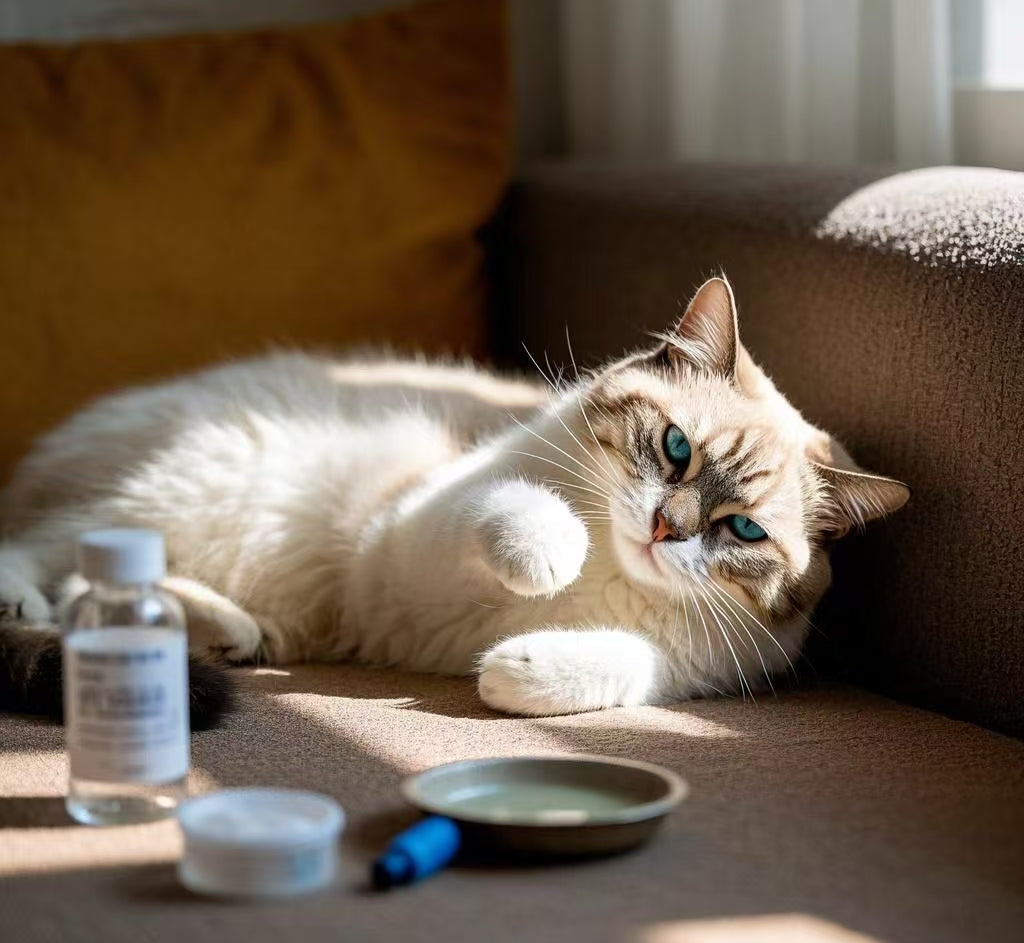Feline panleukopenia
This disease, also known as feline distemper or feline infectious enteritis, is a highly contagious and acute infectious disease. It is characterized by high fever, vomiting, diarrhea, dehydration and a decrease in white blood cells in the blood.
Feline panleukopenia mostly occurs in domestic cat groups and cat breeding farms. Kittens under 1 year old are most susceptible to infection, with an infection rate of up to 70% and a fatality rate of 50% to 60%, up to 90%. However, cats of all ages can also be infected, with adult cats accounting for only 2%. Felines (wild cats, tigers, leopards, bobcats, ocelots, etc.) are also susceptible, and minks and raccoons can also be infected.
Under natural conditions, it is mainly transmitted through direct or indirect contact. Affected cats develop viremia after infection, and the virus is excreted in urine, feces, nasal and eye secretions, saliva, and vomit within 7 days. Even after recovery, the virus can still be excreted in the feces and urine for several weeks to more than a year. Therefore, sick cats are the source of infection of this disease. Fleas, lice, mites and other blood-sucking insects can become vectors. Some recovered cats can become carriers. The course of the disease is generally about 7 days, and death occurs about 18 days after natural infection.
[Main Symptoms] The incubation period is 2 to 9 days, with symptoms of fatigue and lack of appetite at the beginning of the disease. The first fever is around 40°C, lasting for about 24 hours, then returns to normal, and rises again after 2 to 3 days, showing an obvious biphasic fever type. At this time, the symptoms are obvious, including depression, rough coat, and obvious leukopenia. , followed by vomiting and bloody watery diarrhea, and the feces has a special odor. Severe dehydration, rapid weight loss, and purulent discharge from the eyes and nose. Usually death occurs soon after the secondary temperature rise reaches its peak. The long course of the disease is more than 10 days, and the short course is about 7 days. Transuterine infection in pregnant cats can cause miscarriage, stillbirth, premature birth or cerebellar hypoplasia.
shape tire.
Leukopenia is the most significant feature of this disease. When the total number of white blood cells is reduced to about 8000/mm, the disease should be suspected; if it is reduced to 5000/mm, it should be considered severe; if it is reduced to less than 2000/mm², it is suspected. For poor prognosis. Leukopenia is mainly neutropenia.
The characteristic changes at autopsy are hemorrhagic enteritis lesions centered on the ileal transition, with thickening, edema, and swelling of the small intestine. The intestinal contents are small, watery, foul-smelling, and gray-yellow in color. Rope-like fibrous exudates can be seen in the intestinal cavity, the mucous membranes are red, and there is diffuse bleeding.
[Treatment] There is currently no ideal drug. The main methods include injection of hyperimmune blood, rehydration, maintenance of electrolyte balance, and antibiotics to prevent secondary infections.
For traditional Chinese medicine treatment, you can use 5g each of Cornus officinale, Poria cocos, Chinese yam, Rehmannia glutinosa, and Alisma, 3g of paeonol bark, add 500ml of water, boil to 60ml, take it in 3 times (once every 4 hours); or 10g each of Codonopsis pilosula, Astragalus membranaceus, and tortoise shell, white peony root. , Rehmannia glutinosa, Ophiopogon japonicus and Angelica sinensis 5g each. Add 500ml of water, fry until it reaches 50ml, and take it in 2 times.
[Prevention] Formalin-inactivated tissue vaccine, inactivated cell culture virus vaccine or attenuated live virus vaccine can be used for immunization. The specific procedures are: the first vaccination at 7 to 10 weeks of age, the second vaccination at 12 weeks of age, and the third vaccination at 16 weeks of age; vaccination will be carried out once a year thereafter.
Pregnant female cats should use inactivated vaccines because the live vaccine virus can pass through the placenta and cause cerebellar underdevelopment of the fetus.

